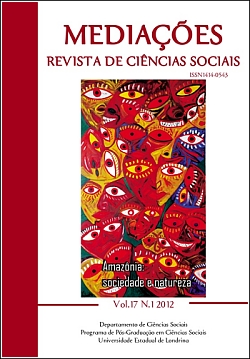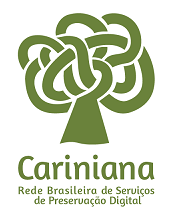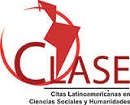Networks shamanic, charlatanism and interethnic processes: a comparative analysis
DOI:
https://doi.org/10.5433/2176-6665.2012v17n1p62Keywords:
Shamanism, Curanderismo, Sibundoy, SionaAbstract
This article examines the historical, social and demographic factors that contributed to the changing roles of shamans among two indigenous groups of Colombia. The shamans of the Valley of Sibundoy strengthened their healing role during the 20TH century through articulation with popular medical practices known as curanderismo. However, during this same period, the Siona shamans, located in the Amazonian lowlands, lost their position as religious-political leaders and ceased to practice their rituals for two decades. Through this comparison, it is argued that shamanism should be seen as a constantly changing phenomenon that emerges out of the interplay of social, cultural, historical and demographic factors in specific situations. The role of the shaman is not a homogeneous phenomenon, but one that is in continuous construction depending upon social actors in particular contexts.Downloads
References
CAICEDO, F. Alhena. Neochamanismos y modernidad: lecturas sobre la emancipación. Revista Nómadas, Bogotá, n. 26, p. 114-147, 2007.
CAICEDO, F. Nuevo chamanismos nueva era. Universitas Humanística, Bogotá, n. 68, p. 15-32, 2009.
CASTELLVÍ, P. Marcelino do. Reseña crítica sobre el descubrimiento de la región de Mocoa y fundaciones de la ciudad del mismo nombre. Amazonia Colombiana Americanista (Sibundoy), Colômbia, v. 4-5, n. 11, p. 1-20, 1941.
CHAVES-CHAMORRO, Margarita. Cabildos multiétnicos e identidades depuradas. In: GARCIA, Clara Inés (ed.). Fronteras territorios y metáforas. Medellín: Instituto de Estudios Regionales, INER, 2003. p. 121-135.
CHAVES-CHAMORRO, Margarita. Jerarquías de color y mestizaje en la Amazonia occidental colombiana. Revista Colombiana de Antropología, Bogotá, v. 38, p. 189-216, jan./dez. 2002.
FOSTER, George; ANDERSON, Barbara. Medical anthropology. New York: Wiley. 1978.
GREENE, Shane. The shaman's needle: development, shamanic agency, and intermedicality in Aguaruna Lands, Peru. American Ethnologist, Arlington, v. 4, n. 25, p. 634-658, 1998.
GUARÍN, Hugo Portela. The Urban Curandero. American Anthropologist, Arlington, n. 73, p. 742-756, 1971.
GUARÍN, Hugo Portela; CURIEUX, Tulio Rojas Enrique; CULLAR, Claudia Liliana Astaíza. Plano de vida del pueblo siona: ga'ntëya bain. Popayán: Taller Editorial Universidad del Cauca, 2003.
GUITIERREZ DE PINEDA, Virginia. La medicina popular en Colombia: razones de su arraigo. Monografías Sociológicas, Bogotá, n. 8, 1961.
LAMB, F. Bruce. Wizard of the Upper Amazon. Boston: Houghton Mifflin Co, 1975.
LANDY, David. Role adaptation: Traditional curers under the impact of western medicine. American Ethnologist, Arlington, n. 1, p. 103-127, 1974.
LANGDON, E. Jean. Cultural bases for trading of visions and spiritual knowledge in the colombian and ecuadorian montana. Networks of the Past: Regional Interaction in Archaeology. In: ANNUAL CONFERENCE OF THE ARCHAEOLOGY ASSOCIATION, 12., 1981, Calgary. Proceedings...Calgary: University of Calgary, 1981. p. 101-116.
LANGDON, E. Jean. Las clasificaciones del yagé dentro del grupo Siona: etnobotánica, etnoquímica e história. América Indígena, Brasília, v. 1, n. 46, p. 101-116, 1986.
LANGDON, E. Jean. Poder y autoridad en el proceso político siona: desarrollo y muerte del shaman. In: EHRENREICH, Jeffrey (org.). Antropologia política en el Ecuador. Quito: ABYA-YALA, 1991. p. 161-188.
LANGDON, E. Jean. Siona medical system: beliefs and behavior. New Orleans: Thesis, Tulane University, 1974.
LANGDON, E. Jean. Xamãs e xamanismos: reflexões autobiográficas e intertextuais sobre a antropologia. Revista Ilha, Santa Catarina, v. 2, n. 11, p. 161-191, 2010.
LANGDON, E. Jean; MACLENNAN, Robert. Western biomedical and sibundoy diagnosis: an interdisciplinary comparison. Social Science and Medicine, Japan, n. 13B, p. 211-219, 1979.
NEEL, James V. et al. Notes on the effect of measles and measles vaccine in a virginsoil population of south american indians. American Journal of Epidemiology, Oxford, v. 4, n. 91, p. 418-429, 1970.
PINZÓN, Carlos; SUÁREZ, Rosa; GARAY, Gloria. Mundos en red: la cultura popular frente a los retos del siglo XXI. Bogotá: Universidad Nacional de Colombia, 2005.
PRESS, Irwin. Urban illness: physicians, curers and dual use in Bogotá. Journal of Health and Social Behavior. Bogotá, n. 10, p. 209-17, 1969.
RAMÍREZ DE JARA, María C. El chamanismo, un campo de articulación de colonizadores y colonizados en la región amazónica de Colombia. Revista Colombiana de Antropología, Colombia, n. 33, p. 165-184, 1997.
RAMÍREZ DE JARA, María C.; PINZÓN, Carlos. Sibundoy shamanism and popular culture in Colombia. In: LANGDON, E. J.; BAER, G. (ed.). Portals of power shamanism in south america. Albuquerque: University of New Mexico Press, 1992. p. 287-304.
SEIJAS, Haydeé. El crecimiento de población de los indios Sibundoy de Colombia a partir del siglo XVIII. In: INTERNATIONAL CONGRESS OF AMERICANISTAS, 39., 1971, Lima. Proceeding… Lima, 1971.
SEIJAS, Haydeé. Medical system of the sibundoy indians. 1969. Thesis (Doctoral in Anthropology Social) - Tulane University, New Orleans. 1969.
STEWARD, Julian H. Western Tucanoan. Handbook of South American Indians. Washington, D.C.: U.S. Government Printing Office, 1948. v. 3.
TAUSSIG, Michael. Folk healing and the structure of conquest in the southwest of Colombia. Journal of Latin American Lore, Los Angeles, v. 2, n. 6, 1980.
TAUSSIG, Michael. Shamanism, colonialism, and the wild man: a study in terror and healing. Chicago: University of Chicago Press, 1987.
URREA, Giraldo F.; ZAPATA, Diego O. Vegetalismo y sistema de representaciones en el curanderismo inga-camentsa. (Pretexto para una discussion sobre las cosmovisiones prehispánicas en la sociedad contemporánea). In: LAGARRIGA, Isabel; GALINIER, Jacques; PERIN, M. (ed.). Chamanismo en latinoamérica, una revisión conceptual. Mexico: Plaza y Valdés Editores, 1995, p. 39-68.
WAWZYNIAK, João Valentin. "Engerar": uma categoria cosmológica sobre pessoa, saúde e corpo. Ilha: Revista de Antropologia, Florianópolis, v. 2, n.5, p. 33-55, 2003.
WHITEFORD, Michael. The forgotten ones. Gainesville, Fla.: University of Florida, Center for Latin American Studies, 1976.
Downloads
Published
How to Cite
Issue
Section
License
Copyright (c) 2012 Esther Jean Langdon

This work is licensed under a Creative Commons Attribution 4.0 International License.
Copyright on articles published in Mediações belongs to the author(s): in the case of partial or entire republication of the original publication, we ask author(s) to indicate the original publication in the periodical.
Mediações uses the Creative Commons Attribution 4.0 International license, which allows Open Access, enabling any user to read, download, copy and disseminate its content so long as adequately referenced.
The opinions expressed by the author(s) are their sole responsibility.
































